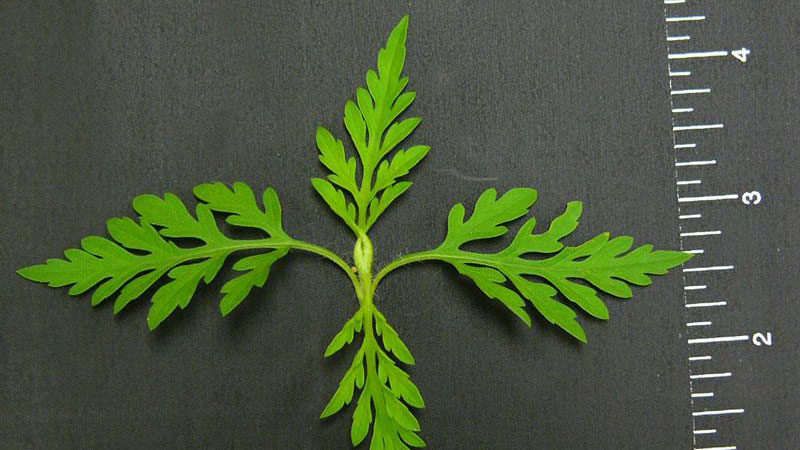Common Ragweed
en Español / em Português
El inglés es el idioma de control de esta página. En la medida en que haya algún conflicto entre la traducción al inglés y la traducción, el inglés prevalece.
Al hacer clic en el enlace de traducción se activa un servicio de traducción gratuito para convertir la página al español. Al igual que con cualquier traducción por Internet, la conversión no es sensible al contexto y puede que no traduzca el texto en su significado original. NC State Extension no garantiza la exactitud del texto traducido. Por favor, tenga en cuenta que algunas aplicaciones y/o servicios pueden no funcionar como se espera cuando se traducen.
Português
Inglês é o idioma de controle desta página. Na medida que haja algum conflito entre o texto original em Inglês e a tradução, o Inglês prevalece.
Ao clicar no link de tradução, um serviço gratuito de tradução será ativado para converter a página para o Português. Como em qualquer tradução pela internet, a conversão não é sensivel ao contexto e pode não ocorrer a tradução para o significado orginal. O serviço de Extensão da Carolina do Norte (NC State Extension) não garante a exatidão do texto traduzido. Por favor, observe que algumas funções ou serviços podem não funcionar como esperado após a tradução.
English
English is the controlling language of this page. To the extent there is any conflict between the English text and the translation, English controls.
Clicking on the translation link activates a free translation service to convert the page to Spanish. As with any Internet translation, the conversion is not context-sensitive and may not translate the text to its original meaning. NC State Extension does not guarantee the accuracy of the translated text. Please note that some applications and/or services may not function as expected when translated.
Collapse ▲Description
Common ragweed (Ambrosia artemisiifolia) is a summer annual weed that emerges early in the spring. It is often found in cultivated areas, but also occurs in roadsides and landscapes. It prefers heavy soils as opposed to sandy soils, and does not tolerate heavy mowing. The deeply dissected leaves are arranged oppositely when young, and alternately in older parts of the plant. Leaves are hairy on both surfaces. Ragweed produces copious amounts of pollen in the late summer, and often causes allergy problems.
Cultural Control
Maintain a dense, actively growing turf through proper mowing, fertilizing, and watering practices. Mow at the proper height for your selected adapted turfgrass. Coring and traffic control reduce compaction and encourage desirable turfgrass competition. It is best to control this summer annual broadleaf weed in late spring or early summer because it is easier to control at this time and the turf will have a greater chance of recovering the areas previously occupied by weeds.
Species Data
- GROWTH SEASON / LIFE CYCLE
- summer annual weed
- GROWTH HABIT
- LEAFLET NUMBER
- LEAF MARGIN
- lobed
- LEAF HAIRS
- upper / lower surface
- LEAF / LEAFLET SHAPE
- oval / egg-shaped / elliptical
- LEAF WIDTH
- 1 inch to greater than 2 inches
- LEAF VENATION
- pinnate
- LEAF ARRANGEMENT
- leaves are arranged oppositely when young, and alternately in older parts of the plant
Figure 6
- leaves are arranged oppositely when young, and alternately in older parts of the plant
- ROOT TYPE
- taproot with many root hairs
- FLOWER COLOR
- inconspicuous








